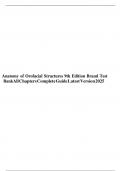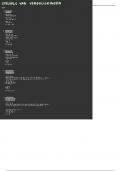Exam (elaborations)
TEST BANK For Anatomy of Orofacial Structures, 9th Edition 2024 by Richard W. Brand, Verified Chapters 1 - 36, Complete
TEST BANK For Anatomy of Orofacial Structures, 9th Edition 2024 by Richard W. Brand, Verified Chapters 1 - 36, Complete
[Show more]




